January 30th 2007
Alfas and Ferraris Highlight
CCCA Annual Collector's Tour
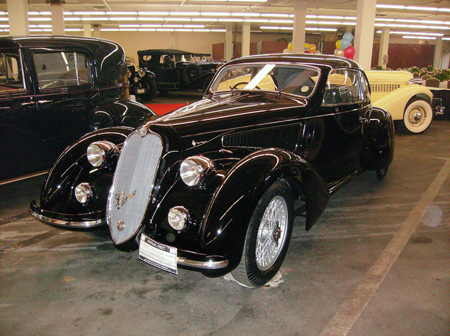
1938 Alfa Romeo 6C 2300 MM coupe, owned by David Smith, Medina WA. The CCCA Tour of collections also visited the Ferrari collection of Jon Shirley. Photo by Brandy Elitch
|
Story by Brandy Elitch.
If you are a car collector, or just interested in automobile design and history, you should know about the Classic Car Club of America. When I joined the CCCA in 1966, it was known as �the old Packard club,� but that has changed too. There are now a lot of foreign marques listed in the directory, and at this year�s meeting, held from January 9-12th in Bellevue Washington we saw a few dozen of them, including rare Alfas, Bugattis and Delages. This year's meet also allowed the members to visit seven important car collections in the Northwest including a Ferrari enthusiasts dream, the Jon Shirley collection.
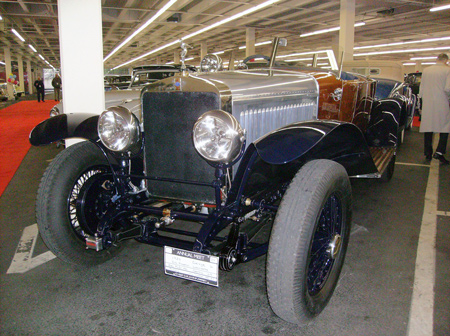
1924 Delage GI D C phaeton, owned by Kenneth McBride, Seattle features a tulip wood body. Photo by Brandy Elitch
|
The CCCA was founded over fifty years ago, and now has over 5000 members. There are regions all over the U.S., with a variety of activities: shows, meetings, caravans, even their own museum. The basic concept was to recognize the greatest automobiles that were built during a specific period of time. The period chosen was what is now called �the Classic Era,� from roughly 1925 until 1948, but cars built before or after that period that are �substantially similar� can also be recognized.
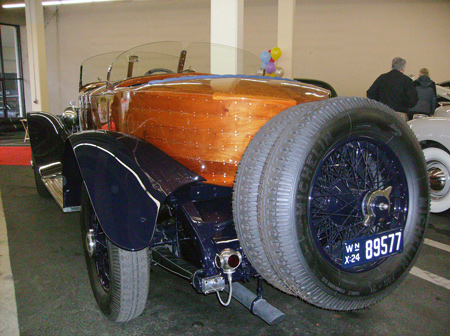
The tulipwood body of the Delage was an ultimate complement to the luxury speedboats of the era both in style and material. Photo by Brandy Elitch.
|
People are always asking why the club does not extend the time frame for acceptable cars, but they miss the point entirely: the �Classic Era� criterion is about an era � the era of the twenties and thirties, which ended with the advent of WW II. It is as much about that era as it is about the cars, and that is not likely to change any time soon. Most club members join a club for the publications, and it would be hard to top the CCCA in this regard. Their principal editor of the monthly Bulletin and quarterly magazine is arguably America's foremost automotive journalist: Beverly Rae Kimes. She has also edited two massive books on the cars recognized by the club, a worthy addition to any library. The CCCA puts on a variety of events through both the national organization and local regions, and there is probably one near you.
This year�s annual meeting offered it�s members a rare chance to visit seven private car collections. The organizers reached out to the Seattle car collector community, and the results were spectacular (and I do not use that word lightly). We were admitted to 7 private collections, and by my count, we saw over 800 cars, and that is just the beginning of the story. In fact, it is too big a story for one article, so in this installment, I will just focus on one visit, the LeMay collection.
Just a five bedroom house, with a 300 car garage
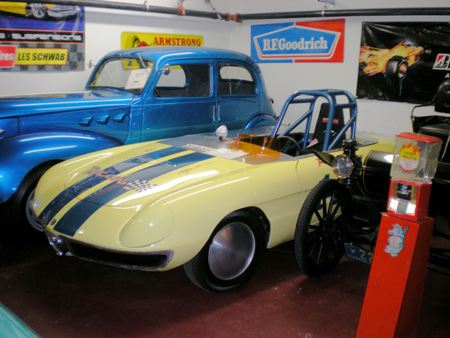
A sample of the eclectic nature of the LeMay collection at his private residence:
An Alfa Duetto between a hot rod and a curved-dash Olds. Photo by John T. Kowalczyk
|
For over 40 years the late Harold LeMay (no relation to Curtis LeMay) amassed a collection of 3500 cars. To put it in perspective, that would be the equivalent of buying one car a day, every day, for ten years. He acquired a former Catholic school complex on large acreage, which enabled him to store a large number of cars in the school gym, theatre, and other outbuildings. Over the years some of the cars were sold at auctions, and about 1700 are now stored in a variety of places all over the Seattle by sympathetic collectors.
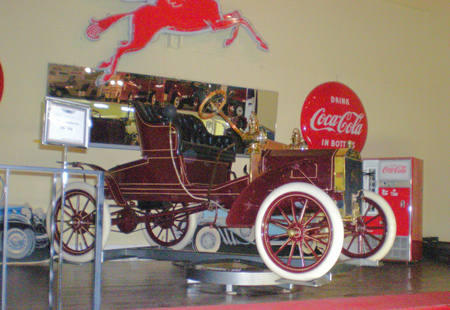
1906 Ford model N, part of the large Ford collection at the LeMay. Photo by John T. Kowalczyk
|
Local collectors and car enthusiasts are awaiting the construction of a new museum on a nine acre campus right next to the Tacoma Dome. The first stage of construction of what is now called �America�s Car Museum� will break ground this spring and calls for raising tens of millions of dollars for the museum complex. A quick look at the advisors for the museum shows that some of America�s most well known car collectors and heavy hitters are deeply involved in this effort. Other countries have what might be termed �national museums (France, Italy, and Germany) and now the U.S. will have one, too.
About 350 cars will be displayed in the museum, and the vault will hold another 1500 cars.
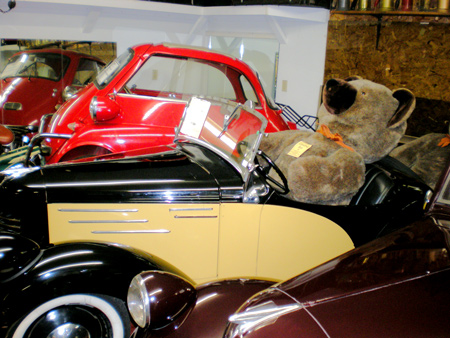
Bantam Austin next to an Isetta 300, seen at the LeMay. Photo by John T. Kowalczyk
|
For one weekend in August, the museum trustees open up the school complex where around 500 cars are stored now, and thousands of car enthusiasts converge on it to see what is there. But our group was in for a special treat. Harold LeMay also built a series of garages on the grounds of his house, a mile away from the school. We visited the house, and were welcomed by his widow, Nancy LeMay, who told us that her home was �just a modest five bedroom house with a 300 car garage.�
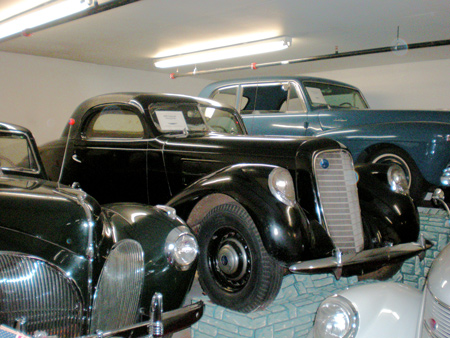
LeMay found interesting ways of storing 300 cars in small garages. Photo by John T. Kowalczyk
|
And indeed it was. But it was more than a garage, because each room was really a little museum wing, complete with dioramas, signs, memorabilia, even mint and boxed doll collections with hundreds of dolls. This part of the collection is normally not seen by the public. It is hard to describe, and I still can�t figure out how they got all those cars in all those rooms, particularly the upstairs rooms. You could spent days there, and we only had a few hours, just enough to be overwhelmed with it all. The museum provided docents to guide us through the maze, and they were very courteous and helpful � a nice touch, and typical of this meet. You can join the Museum membership for $50 a year. This entitles you to tickets for the annual car show, and a variety of other benefits.
Next, the best of the rest, including the collection of Jon Shirley.



